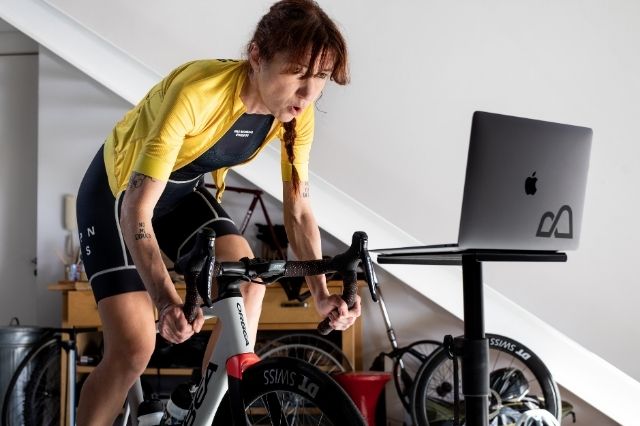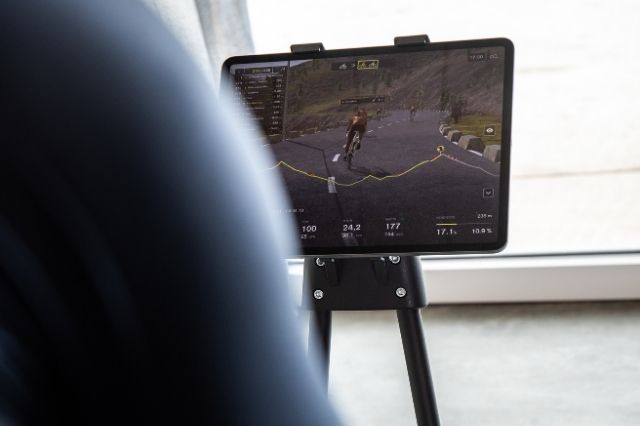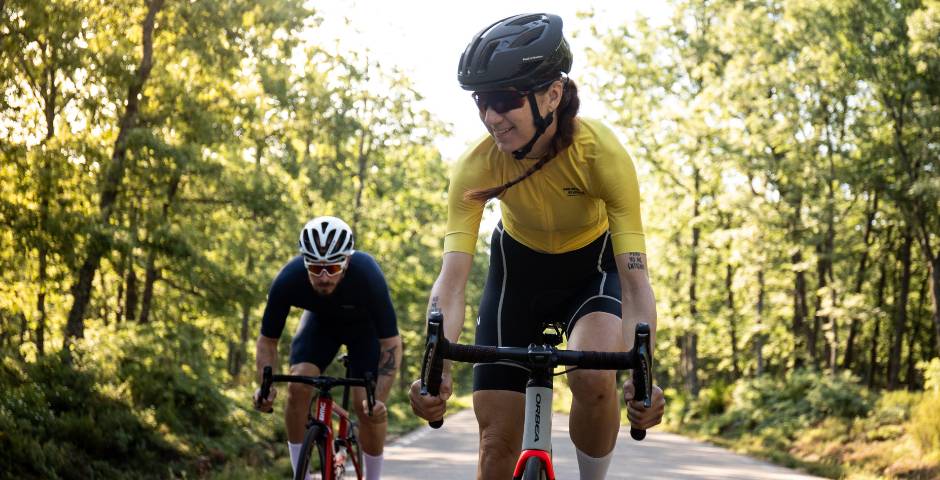If you are new to cycling and are looking for information, most of the publications you come across will tell you that one of the key factors to improve your cycling is your pedaling technique. If you’re already a seasoned training enthusiast, we imagine that you live in the dilemma of spending time improving technique versus bulking up with your current capabilities.
We have good news for you: starting from the premise that pedaling technique is indeed one of the most important aspects in this, our beloved two-wheeled sport, neophytes and experienced riders are in time to learn and train this technique, and avoid injuries derived from bad positions.
But there’s more: you can train your pedaling technique without going outdoors. In fact, our recommendation is to train this technique indoors. Just get on the trainer, connect to your BKOOL session and, in a friendly and risk-free environment, get to work on the specific exercises you have planned.
Benefits of improving pedaling technique: reduced injuries
One of the great benefits of giving pedaling technique the attention it deserves is the reduced risk of injury. Let’s take a very graphic example: a three-hour ride on roads, with a cadence of 90 revolutions per minute (a very common cadence). We are talking about your legs performing the same movement 16,200 times.
If we don’t have a well-developed technique, there is a risk that some of these repetitive movements could end up in an ugly injury.
One of the most common injuries among cyclists is tendonitis, both patellar and Achilles tendon, which are closely related to the posture we acquire when pedaling, hence the importance of having a good technique.
Whether you train outdoors or indoors, and to minimise these possible injuries, you must take into account a number of factors that from our point of view are key:
Adjusting your bike
This is probably the most crucial point and the one that avoids most injuries. Having your bike adjusted by a biomechanical expert will help your muscles to acquire a correct position when pedaling. Each athlete needs very specific adjustments that have to do with his or her size.
The size of the bike, the height of the saddle and its offset, the inclination of the brake levers, the position of the cleats on the shoes or the height of the handlebars are just some of the factors that must be perfectly adapted so that your body does not acquire positions that can lead to injury.
In this respect, we insist, it is a good idea to consult a specialist who would help you out with this.

The cadence
The pedaling rhythm is one of the most common topics when we talk about cycling. It should be taken into account that, in addition, it is especially important when we do long rides that require overexertion.
A summary: high cadences affect our cardiovascular capacity, increasing our heart rate, while low cadences affect our musculature. Depending on the type of training we are dealing with, it would be in our interest to increase or decrease. Our recommendation is clear: if we are beginners, we have to avoid high cadences, especially when we start riding, we will have time to try to imitate Chris Froome when we gain experience!
Within your cycling sessions, you can plan times to work on cadence. In the BKOOL workout planner, you can set a specific target that, in a set workout, will help you to neuromuscularly strengthen the target cadence.
The pedal movement
Normally cyclists tend to push forward on the pedals, putting too much effort into the movement, when the correct technique is to pull the pedals with a semicircular movement.
Mentally this change is complicated, but there are also exercises to enhance this. One of them, very common, is to include in sessions of one hour a part in the area of the beginning, about ten minutes, in which we combine blocks of one minute first pedaling only with one foot, being aware of what movement makes the pedal stroke, with the other foot.
Remember the basic recommendation: from the low position of the pedal we should pull up and, in the fall, exert less effort on the push. The point is to imagine two semicircles, one on the left, followed by one on the right.
Distribute the load on both legs
Whether you are right-handed or left-handed, there is one leg with which you push more and is therefore more developed.
This imbalance in strength greatly influences the efficiency of your workouts and, of course, also your speed. Pedal with a 50/50 distribution of strength in each leg to balance yourself, improve the quality of your workouts, and improve your posture on the bike.
Work your core
It may seem a trivial issue when it comes to refining your pedaling technique, but the truth is that a strong core is essential to maintain a proper posture on the bike. The more confident we are from the waist up, the more stability we have in the lower body, which can focus on getting as many watts as possible to the pedals.
Abdominal strength exercises, squats or weight training at least twice a week will increase your performance on the bike in no time.
 Go to BKOOL
Go to BKOOL





